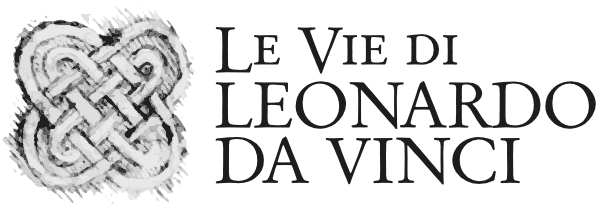Drawings and fortifications
In the journey in Romagna
Cesena
The city of Cesena, one of the main destinations of Leonardo Da Vinci’s journey in Romagna, is located in the heart of the Savio Valley, between the Tuscan-Romagnol Apennines and the Adriatic Sea.
In 1502, in the years in which Cesena had become the capital of the Duchy of Romagna under Cesare Borgia, precisely at his behest
Leonardo arrived in Cesena as an architect and engineer
to draw up the updated cartography of the city and modernize the fortifications. During his trip to Romagna which lasted over four months,
he noted in his notebook - manuscript L - the city walls, the Rocca Nuova and the Rocca Malatestiana
located on the Garampo hill, surprising architectural details, unusual ethnographic observations, studies on canalizations and regulation of river waters.
Cesena
Located between “the plain and the mountain”,in Dante Alighieri’s description, situated along the route of the Via Emilia and flanked by the Savio river, the city of Cesena is characterized by a small and delightful city centre, bordered by the Renaissance walls, the largest of those that survived and are still visible today in Romagna. Among the historic buildings, churches and suggestive squares, the imposing fifteenth-century Fortress and the splendid Malatestiana Libraryemerge, inaugurated in 1454 at the behest of the lord of Cesena Domenico Malatesta Novello. The Library is perfectly preserved in its structure, furnishings and rich book heritage, and is among the very few monuments - the only one in Emilia-Romagna, eight in all of Italy - declared a Memory of the World by UNESCO. Among the many codices kept inside the Malatestiana there is an unusual manuscript, the De re militari by Roberto Valturio dating back to the 15th century, a treatise curiously also owned by Leonardo, a source of inspiration in the initial studies carried out on the art of war.
Among Leonardo’s manuscripts we find descriptions of surprising automatic and acoustic systems, such as the suggestive mechanical war drum, which was reproduced in the Musicalia mechanical music museum, set up in Villa Silvia-Carducci.
In the Savio Valley, in addition to Cesena, there are cities and towns of great interest. From Bagno di Romagna between woods and thermal baths, to Verghereto between the sources of the Tiber and Savio, from Sarsina a plautine city to Mercato Saraceno, a city of wine, up to the poetic village of Montiano: a territory to be discovered, a unique and varied journey made of art, history, culture, spirituality, traditions, flavours.
In the journey in Romagna
Currently the Network and Itinerary of the " Le Vie di Leonardo Da Vinci " involves 6 cities ((Vinci, Amboise, Vipava, Istanbul, Florence and Cesena) from 4 nations (Italy, France, Slovenia, Turkey).

